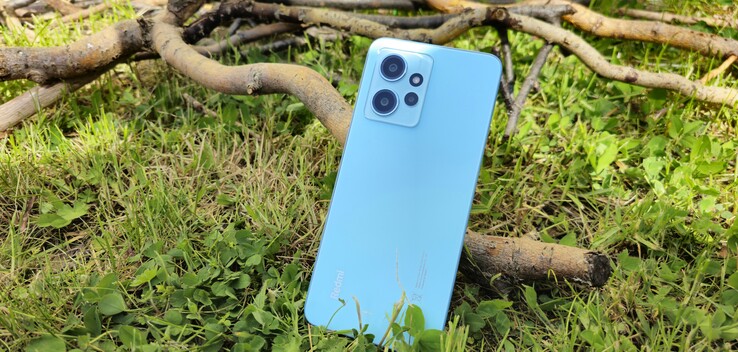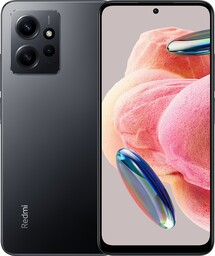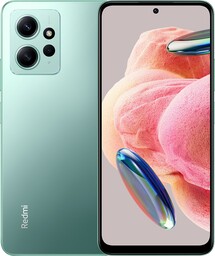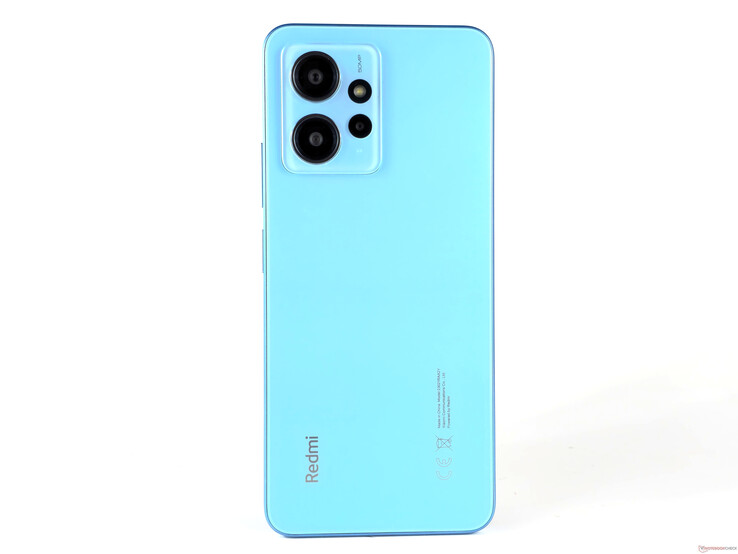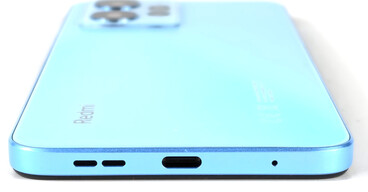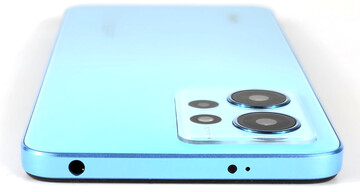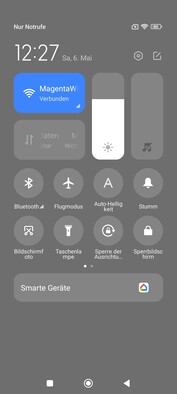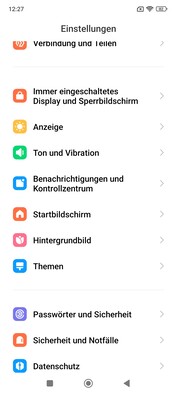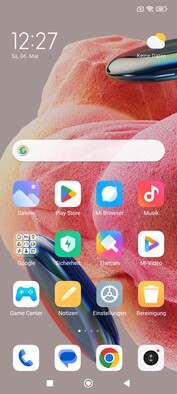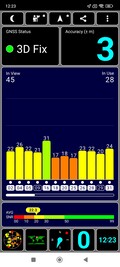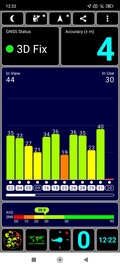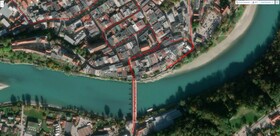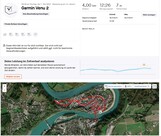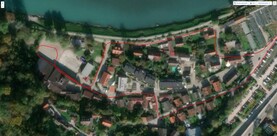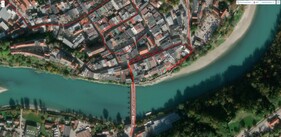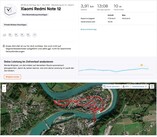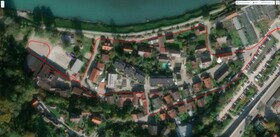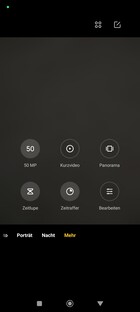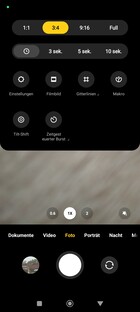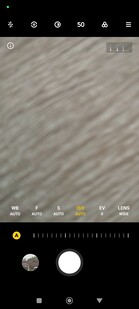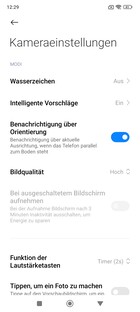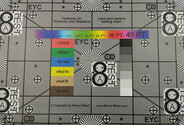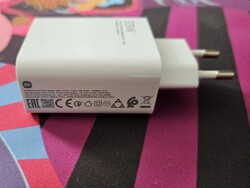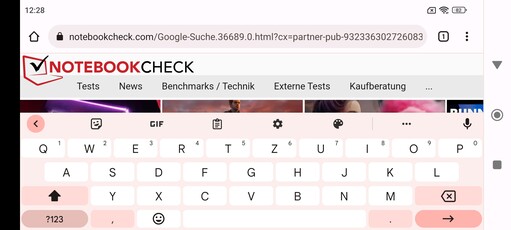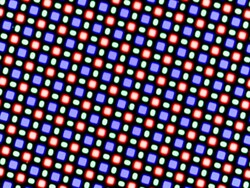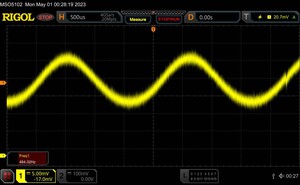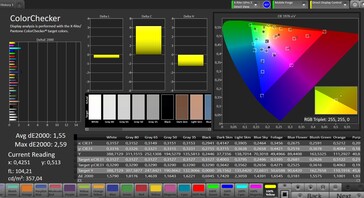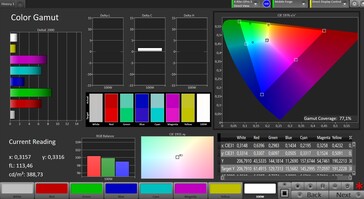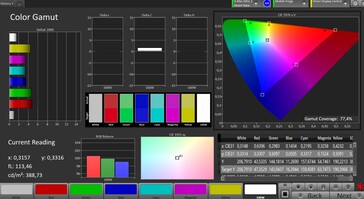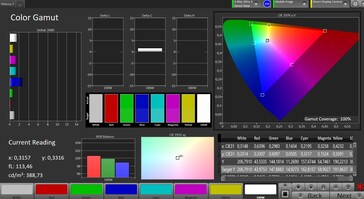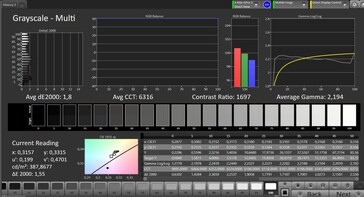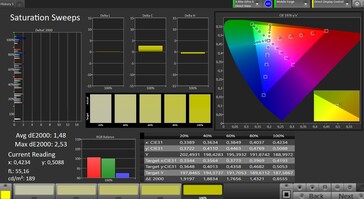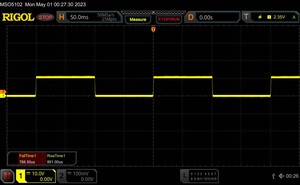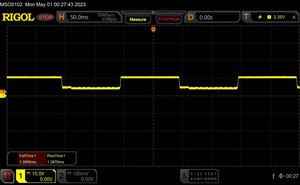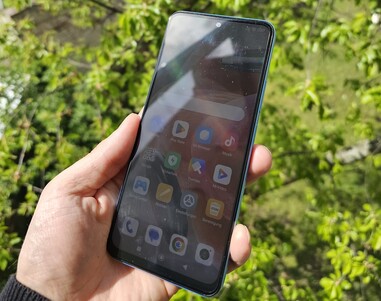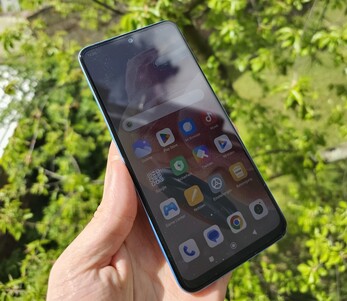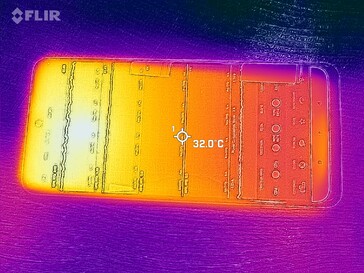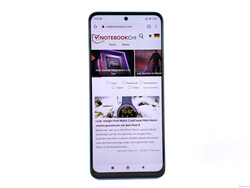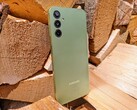Xiaomi Redmi Note 12 review: Smartphone with 120 Hz AMOLED and 1,200 nits for under US$200
The Redmi Note 12 aims to stand out in the affordable middle class with a very bright, 120 Hz AMOLED display - the manufacturer advertises a peak brightness of 1,200 nits for the 6.67-inch OLED panel.
While the Note 12 sister model in the 5G version uses a Qualcomm Snapdragon 4 Gen 1, the "normal" Note 12 relies on an older Snapdragon 685. Consequently, the mid-range smartphone only supports the 4G standard. As with the Note 11, camera enthusiasts should also get their money's worth with the 50 MP Samsung JN1 sensor in the 2023 model.
The Redmi Note 12 comes with 4 GB of RAM and either 64 GB or 128 GB of UFS 2.2 storage. At the time of review, prices were around US$170 for the entry-level model. Buyers can also get the Redmi Buds 4 Lite or the Redmi Smart Band 2 free of charge from the in-house Mi Store and selected partner shops.
Possible competitors in comparison
Rating | Date | Model | Weight | Drive | Size | Resolution | Price |
|---|---|---|---|---|---|---|---|
| 80.1 % v7 (old) | 05 / 2023 | Xiaomi Redmi Note 12 4G SD 685, Adreno 610 | 188 g | 128 GB UFS 2.2 Flash | 6.67" | 2400x1080 | |
| 80 % v7 (old) | 05 / 2022 | Xiaomi Redmi Note 11 SD 680, Adreno 610 | 179 g | 64 GB UFS 2.2 Flash | 6.43" | 2400x1080 | |
| 79 % v7 (old) | 04 / 2023 | Motorola Moto G13 Helio G85, Mali-G52 MP2 | 183.5 g | 128 GB eMMC Flash | 6.50" | 1600x720 | |
| 79.6 % v7 (old) | 08 / 2021 | Samsung Galaxy A22 5G Dimensity 700, Mali-G57 MP2 | 203 g | 64 GB eMMC Flash | 6.60" | 2400x1080 | |
| 80.9 % v7 (old) | 12 / 2022 | Xiaomi Poco M5s Helio G95, Mali-G76 MP4 | 178.8 g | 64 GB UFS 2.2 Flash | 6.43" | 2400x1080 | |
| 78.3 % v7 (old) | 04 / 2023 | Telekom T Phone Dimensity 700, Mali-G57 MP2 | 195 g | 64 GB UFS 2.0 Flash | 6.52" | 1600x720 |
Case - Redmi Note 12 with IP53 certification
Visually, the Redmi Note 12 hardly differs from the Pro series, but the edges around the display are a little wider on the entry-level model. As a result, the screen-edge ratio is lower than that of the Note 12 Pro at 85%. The screen's edges could have been a bit narrower for our taste, but are still acceptable for the price range. Nothing is known about the built-in protective glass on the front, which makes an assessment of its damage resistance difficult.
The case can be purchased in the colors Onyx Gray, Mint Green and Ice Blue and has a matte plastic surface, which means that fingerprints are not very noticeable. The Redmi Note 12 convinces with good workmanship, but compromises had to be made in terms of quality and feel. The Pro models with a glass back have the edge here, especially since the surface is easier to clean.
Like the predecessor, the Note 12 has IP certification, but only IP53, which means that it is protected against splashes of water. So the case is not waterproof.
Equipment - Xiaomi smartphone with audio jack
In addition to an NFC chip and Bluetooth 5.2, the inexpensive mid-range smartphone's features also include an audio jack port and USB OTG for the quick connection of external accessories. A USB Type-C port that supports the USB 2.0 standard is available for wired data transfer. The wireless image transfer of screen content (Miracast) also worked without issue in our tests.
The internal 128 GB storage of our test device can be expanded with a microSD card. After deducting the operating system and apps, the user has 107 GB available.
microSD Card Reader
The integrated microSD slot in the Redmi Note 12 supports the current SDHC and SDXC standards up to 1 TB - thanks to the triple card slot, the dual SIM capability is not affected when the memory is expanded.
In terms of copying speed, the Xiaomi smartphone operates at the solid level of the Note 11 from the previous year at 24 MB/s. So no progress has been made here; competing devices such as the Galaxy A22 copy images much faster. On the other hand, in tandem with our AV PRO V60 reference card, the microSD slot in the Redmi Note 12 convinces with good values in the Cross Platform Disk Test.
| SD Card Reader - average JPG Copy Test (av. of 3 runs) | |
| Samsung Galaxy A22 5G (Angelbird V60) | |
| Motorola Moto G13 (Angelbird V60) | |
| Xiaomi Redmi Note 11 (Angelbird AV Pro V60) | |
| Xiaomi Redmi Note 12 4G (Angelbird V60) | |
| Telekom T Phone (Angelbird AV Pro V60) | |
| Xiaomi Poco M5s (Angelbird V60) | |
Cross Platform Disk Test (CPDT)
Software - Xiaomi smartphone with Android 13
The Chinese manufacturer's product philosophy in terms of software maintenance is almost astonishing. While the Pro models are launched with the old Android 12, the inexpensive Redmi Note 12 already uses Android 13 and will thus be provided with updates longer than its higher-priced sister models. According to the Xiaomi Security Center, the Note 12 will receive security updates (including Android 15) until 2026.
Xiaomi combines the Android system with its own MiUI user interface (version 14). At the time of review, the latest security patch was from from April 2023 and thus up to date. The Note 12 should receive updates once a quarter.
Communication and GNSS - Redmi Note 12 without 5G
In the home network, the Redmi Note 12 convinces with consistent transfer rates, but only uses Wi-Fi 5; Wi-Fi 6 cannot really be expected in this price range. Like the competition, the Redmi smartphone can only manage a low bandwidth, but the speeds are still okay for a sub US$200 smartphone. In conjunction with the Asus ROG Rapture GT-AXE11000, we measured peak speeds of over 300 MBit/s, but we only get 286 MBit/s on average when receiving.
The mid-range smartphone does not support access to the 5G network for mobile internet access. The range of frequencies is also very minimalistic at 11 LTE bands. Although users are sufficiently equipped in Europe, the required 4G frequencies should be checked before going abroad.
| Networking | |
| iperf3 receive AXE11000 | |
| Average of class Smartphone (52 - 1857, n=182, last 2 years) | |
| Telekom T Phone | |
| Motorola Moto G13 | |
| Xiaomi Poco M5s | |
| Xiaomi Redmi Note 11 | |
| Xiaomi Redmi Note 12 4G | |
| iperf3 transmit AXE11000 | |
| Average of class Smartphone (49.8 - 1828, n=182, last 2 years) | |
| Telekom T Phone | |
| Motorola Moto G13 | |
| Xiaomi Poco M5s | |
| Xiaomi Redmi Note 12 4G | |
| Xiaomi Redmi Note 11 | |
| iperf3 transmit AX12 | |
| Samsung Galaxy A22 5G | |
| iperf3 receive AX12 | |
| Samsung Galaxy A22 5G | |
The Xiaomi smartphone uses the GPS, GLONASS, BeiDou and Galileo satellite systems in single band for localization. In order to assess its real world tracking capabilities, we took the mid-range smartphone on a short bike ride along with a Garmin Venu 2 for comparison purposes.
The Note 12's tracking capabilities are not so impressive across the board. Deviations from the selected routes are sometimes clearly visible in the detailed history of the GPS recording. The Redmi phone tends to deviate from the path actually taken, especially when going around corners. Despite these minor inaccuracies, the Note 12 is still suitable for navigational tasks.
Telephony and Voice Quality - Xiaomi smartphone with dual SIM
The Redmi Note 12 supports two nano-SIM cards as well as VoLTE and WLAN calling. The voice quality is unobtrusively good. Voices are reproduced intelligibly and also characterized as clear by our conversation partner. Thanks to the two microphones, the Xiaomi smartphone also scores with solid intelligibility in video conferencing - tested via Skype - and a decent dual speaker system.
Cameras - Xiaomi smartphone with triple cam
Xiaomi installs a 1/3-inch sensor with a resolution of 13 MP on the front. The selfie cam offers satisfactory sharpness and decent exposure in daylight. The camera, which is hidden in the punch hole, records videos in maximum Full HD quality.
The main camera of the Redmi Note 12 is based on an ISOCELL JN1, which is also installed in the predecessor and the Moto G53. With a sensor size of 1/2.76 inch and a resolution of 50 MP, the pixels are quite small at 0.64 microns, but the ISOCELL 2.0 technology processes virtual pixels at a size of 1.28 microns. Since the Snapdragon 685 only supports a video resolution of 1080p, the Redmi Note 12 only records videos in FullHD at 30 fps.
The photos offer good image sharpness in bright light, but graininess is sometimes visible in the shadowy areas. The dynamics in the photos could also be better overall. The Redmi smartphone quickly reaches its limits in low-light conditions. Few details are preserved in the 12.5 MP images and the sharpness is at a low level. The color scheme of the camera software in our test photo in low light is also "interesting".
The ultra wide-angle lens with its rather narrow 120-degree field of view is standard fare in this price range. The low-resolution 8 MP Omnivision sensor (OV08D) displays many image errors and somewhat pale colors, but the image quality is still solid for the inexpensive midrange.
Image comparison
Choose a scene and navigate within the first image. One click changes the position on touchscreens. One click on the zoomed-in image opens the original in a new window. The first image shows the scaled photograph of the test device.
Main cameraMain cameraLow lightWide angleWe analyzed the color reproduction of the 50 MP lens in comparison to the actual reference colors under controlled lighting conditions. The smartphone-typical brightening of photos is recognizable. Otherwise, the camera software from Xiaomi delivers relatively low deviations in the ColorChecker passport and no major outliers in color fidelity (>15). The white balance is also satisfactory.
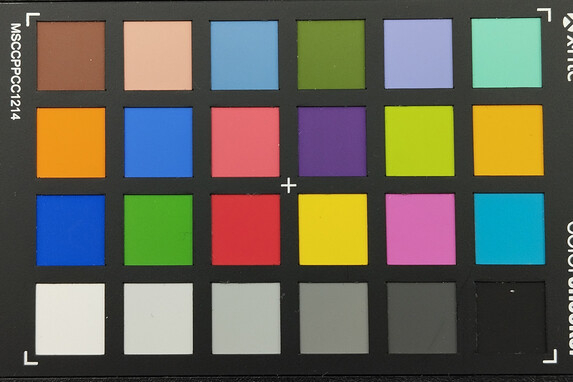
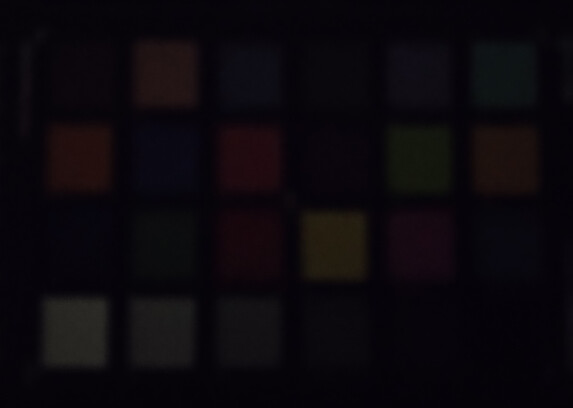
Accessories and Warranty - Redmi Note 12 with power supply
The scope of delivery of the Redmi Note 12 includes a modular 33-watt power supply, a data or charging cable, a protective case cover, a SIM pin and a quick start guide, including warranty conditions.
Xiaomi grants a 12-month warranty on its smartphone in Germany. This may differ in other countries, so buyers should double check before purchasing.
Input Devices & Operation - Xiaomi smartphone with FaceUnlock
At a sampling rate of 240 Hz, the Redmi Note 12 panel responds to touches with high sensitivity and refreshes up to 240 times per second, such as in games, which ensures low input latency. Inputs on the 6.67-inch OLED dot display are implemented accurately right up to the touchscreen's corners. A protective film is applied ex-factory.
A fingerprint sensor is integrated into the on/off button and reliably unlocks the mid-range smartphone. However, this takes a brief second before the screen shines in all its glory. A somewhat unsafe 2D facial recognition method, which is based on a FaceUnlock function via the front-facing camera, is also available. It also works well in daylight.
Display - Redmi smartphone with 120 Hz
The Redmi Note 12's 6.67-inch AMOLED panel offers a frame rate of 120 Hz and a resolution of 2,400 x 1,080. The frame rate can be manually reduced to 60 Hz to save power. An RGBG matrix consisting of one red, one blue and two green LEDs is used.
Xiaomi specifies a brightness of 700 nits for the display in HBM (High Brightness Mode). In our brightness measurement, the OLED screen peaks at 672 cd/m² in a full-surface white display, which is a good rate for this price range and almost as high as specified by the manufacturer. In the APL18 measurement, which is more representative of everyday use, the smartphone reaches 1045 cd/m² in the center of the screen. Another very good value for a sub US$200 smartphone, but slightly less than the 1,200 nits advertised by Xiaomi.
Due to the installed display technology, the Redmi Note 12 uses PWM technology, including screen flickering, to control screen brightness. The amplitude curve is even over the entire brightness spectrum at a frequency of 484 Hz.
| |||||||||||||||||||||||||
Brightness Distribution: 97 %
Center on Battery: 650 cd/m²
Contrast: ∞:1 (Black: 0 cd/m²)
ΔE ColorChecker Calman: 1.55 | ∀{0.5-29.43 Ø4.78}
ΔE Greyscale Calman: 1.8 | ∀{0.09-98 Ø5}
100% sRGB (Calman 2D)
Gamma: 2.194
CCT: 6316 K
| Xiaomi Redmi Note 12 4G AMOLED, 2400x1080, 6.7" | Xiaomi Redmi Note 11 OLED, 2400x1080, 6.4" | Motorola Moto G13 IPS, 1600x720, 6.5" | Samsung Galaxy A22 5G IPS, 2400x1080, 6.6" | Xiaomi Poco M5s AMOLED, 2400x1080, 6.4" | Telekom T Phone IPS, 1600x720, 6.5" | |
|---|---|---|---|---|---|---|
| Screen | 14% | -122% | -132% | -15% | -179% | |
| Brightness middle (cd/m²) | 650 | 702 8% | 555 -15% | 415 -36% | 715 10% | 419 -36% |
| Brightness (cd/m²) | 658 | 701 7% | 553 -16% | 378 -43% | 720 9% | 391 -41% |
| Brightness Distribution (%) | 97 | 98 1% | 93 -4% | 76 -22% | 95 -2% | 89 -8% |
| Black Level * (cd/m²) | 0.29 | 0.26 | 0.29 | |||
| Colorchecker dE 2000 * | 1.55 | 1 35% | 5.17 -234% | 5.41 -249% | 2.04 -32% | 6.1 -294% |
| Colorchecker dE 2000 max. * | 2.59 | 2.3 11% | 10.61 -310% | 9.77 -277% | 4.85 -87% | 11.9 -359% |
| Greyscale dE 2000 * | 1.8 | 1.4 22% | 4.5 -150% | 4.8 -167% | 1.6 11% | 7.8 -333% |
| Gamma | 2.194 100% | 2.2 100% | 2.131 103% | 2.348 94% | 2.28 96% | 2.21 100% |
| CCT | 6316 103% | 6520 100% | 7380 88% | 7748 84% | 6488 100% | 8208 79% |
| Contrast (:1) | 1914 | 1596 | 1445 |
* ... smaller is better
Screen Flickering / PWM (Pulse-Width Modulation)
| Screen flickering / PWM detected | 484 Hz | ||
The display backlight flickers at 484 Hz (worst case, e.g., utilizing PWM) . The frequency of 484 Hz is relatively high, so most users sensitive to PWM should not notice any flickering. However, there are reports that some users are still sensitive to PWM at 500 Hz and above, so be aware. In comparison: 53 % of all tested devices do not use PWM to dim the display. If PWM was detected, an average of 8111 (minimum: 5 - maximum: 343500) Hz was measured. | |||
Series of measurements at a fixed zoom level and different brightness settings
We examined the AMOLED panel's color calibration using Calman analysis software. The "Standard" profile controls the sRGB color space and also covers it to a large extent. The Xiaomi mid-range smartphone has three color profiles as well as the option of adjusting the color temperature.
Our measured DeltaE values indicate a small deviation in the colors (1.55). However, minimal differences can still be seen in the sRGB for blue and magenta. The grayscale reproduction also shows a slight deviation of less than 2.0 dB(A).
Display Response Times
| ↔ Response Time Black to White | ||
|---|---|---|
| 1.7 ms ... rise ↗ and fall ↘ combined | ↗ 0.8 ms rise | |
| ↘ 0.9 ms fall | ||
| The screen shows very fast response rates in our tests and should be very well suited for fast-paced gaming. In comparison, all tested devices range from 0.1 (minimum) to 240 (maximum) ms. » 9 % of all devices are better. This means that the measured response time is better than the average of all tested devices (20.2 ms). | ||
| ↔ Response Time 50% Grey to 80% Grey | ||
| 2.8 ms ... rise ↗ and fall ↘ combined | ↗ 1.4 ms rise | |
| ↘ 1.4 ms fall | ||
| The screen shows very fast response rates in our tests and should be very well suited for fast-paced gaming. In comparison, all tested devices range from 0.165 (minimum) to 636 (maximum) ms. » 11 % of all devices are better. This means that the measured response time is better than the average of all tested devices (31.6 ms). | ||
The Redmi Note 12 is well equipped for outdoor use. Content remains sufficiently visible in direct sunlight thanks to the high brightness, although reflections on the glass surface can severely restrict readability. The viewing-angle stability is very good due to the OLED technology and only a slight brightness loss is noticeable at very flat viewing angles.
Performance - Xiaomi Phone with Qualcomm SoC
The Qualcomm Snapdragon 685, manufactured using the 6 nm process, is used in the Redmi Note 12. Like its predecessor, the chipset has four Cortex-A73 cores and four Cortex-A53 cores and uses an Adreno 610 as the graphics unit.
In our benchmark package, the Redmi smartphone positions itself slightly ahead of the Snapdragon 680 of the Note 11, with 4 GB of RAM and 2 GB of virtual working memory, but the scores of the Note 12 are on a low level in single-core performance. However, the MediaTek Dimensity 700 in the Telekom T-Phone is also more powerful in multi-core.
| UL Procyon AI Inference for Android - Overall Score NNAPI | |
| Average of class Smartphone (3769 - 81594, n=139, last 2 years) | |
| Xiaomi Poco M5s | |
| Xiaomi Redmi Note 11 | |
| Average Qualcomm Snapdragon 685 4G (4445 - 4615, n=2) | |
| Xiaomi Redmi Note 12 4G | |
| AImark - Score v3.x | |
| Average of class Smartphone (82 - 307528, n=126, last 2 years) | |
| Average Qualcomm Snapdragon 685 4G (365 - 382, n=2) | |
| Xiaomi Redmi Note 12 4G | |
| Xiaomi Poco M5s | |
In the graphics tests, the Note 12 with its Adreno 610 performs hardly any better than its predecessor. Devices equipped with the MediaTek Dimensity 700 and Helio G95 achieve significantly higher values in GFX Bench and 3DMark.
GFXBench (DX / GLBenchmark) 2.7: T-Rex Onscreen | 1920x1080 T-Rex Offscreen
GFXBench 3.0: on screen Manhattan Onscreen OGL | 1920x1080 1080p Manhattan Offscreen
GFXBench 3.1: on screen Manhattan ES 3.1 Onscreen | 1920x1080 Manhattan ES 3.1 Offscreen
GFXBench: on screen Car Chase Onscreen | 1920x1080 Car Chase Offscreen | on screen Aztec Ruins High Tier Onscreen | 2560x1440 Aztec Ruins High Tier Offscreen | on screen Aztec Ruins Normal Tier Onscreen | 1920x1080 Aztec Ruins Normal Tier Offscreen | 3840x2160 4K Aztec Ruins High Tier Offscreen
| 3DMark / Wild Life Extreme Unlimited | |
| Samsung Galaxy A22 5G | |
| Xiaomi Poco M5s | |
| Telekom T Phone | |
| Motorola Moto G13 | |
| Xiaomi Redmi Note 12 4G | |
| Xiaomi Redmi Note 11 | |
| 3DMark / Wild Life Extreme | |
| Xiaomi Poco M5s | |
| Telekom T Phone | |
| Motorola Moto G13 | |
| Xiaomi Redmi Note 12 4G | |
| Xiaomi Redmi Note 11 | |
| Samsung Galaxy A22 5G | |
| 3DMark / Wild Life Unlimited Score | |
| Xiaomi Poco M5s | |
| Telekom T Phone | |
| Samsung Galaxy A22 5G | |
| Motorola Moto G13 | |
| Xiaomi Redmi Note 12 4G | |
| Xiaomi Redmi Note 11 | |
| 3DMark / Wild Life Score | |
| Xiaomi Poco M5s | |
| Telekom T Phone | |
| Samsung Galaxy A22 5G | |
| Motorola Moto G13 | |
| Xiaomi Redmi Note 12 4G | |
| Xiaomi Redmi Note 11 | |
| 3DMark / Sling Shot Extreme (Vulkan) Unlimited Physics | |
| Telekom T Phone | |
| Xiaomi Poco M5s | |
| Samsung Galaxy A22 5G | |
| Xiaomi Redmi Note 12 4G | |
| Xiaomi Redmi Note 11 | |
| 3DMark / Sling Shot Extreme (Vulkan) Unlimited Graphics | |
| Xiaomi Poco M5s | |
| Telekom T Phone | |
| Samsung Galaxy A22 5G | |
| Xiaomi Redmi Note 12 4G | |
| Xiaomi Redmi Note 11 | |
| 3DMark / Sling Shot Extreme (Vulkan) Unlimited | |
| Xiaomi Poco M5s | |
| Telekom T Phone | |
| Samsung Galaxy A22 5G | |
| Xiaomi Redmi Note 12 4G | |
| Xiaomi Redmi Note 11 | |
| 3DMark / Sling Shot Extreme (ES 3.1) Unlimited Physics | |
| Xiaomi Poco M5s | |
| Telekom T Phone | |
| Samsung Galaxy A22 5G | |
| Xiaomi Redmi Note 12 4G | |
| Xiaomi Redmi Note 11 | |
| 3DMark / Sling Shot Extreme (ES 3.1) Unlimited Graphics | |
| Xiaomi Poco M5s | |
| Telekom T Phone | |
| Samsung Galaxy A22 5G | |
| Xiaomi Redmi Note 12 4G | |
| Xiaomi Redmi Note 11 | |
| 3DMark / Sling Shot Extreme (ES 3.1) Unlimited | |
| Xiaomi Poco M5s | |
| Telekom T Phone | |
| Samsung Galaxy A22 5G | |
| Xiaomi Redmi Note 12 4G | |
| Xiaomi Redmi Note 11 | |
| GFXBench (DX / GLBenchmark) 2.7 / T-Rex Onscreen | |
| Xiaomi Poco M5s | |
| Motorola Moto G13 | |
| Samsung Galaxy A22 5G | |
| Xiaomi Redmi Note 12 4G | |
| Xiaomi Redmi Note 11 | |
| GFXBench (DX / GLBenchmark) 2.7 / T-Rex Offscreen | |
| Xiaomi Poco M5s | |
| Samsung Galaxy A22 5G | |
| Xiaomi Redmi Note 12 4G | |
| Motorola Moto G13 | |
| Xiaomi Redmi Note 11 | |
| GFXBench 3.0 / Manhattan Onscreen OGL | |
| Xiaomi Poco M5s | |
| Motorola Moto G13 | |
| Samsung Galaxy A22 5G | |
| Xiaomi Redmi Note 12 4G | |
| Xiaomi Redmi Note 11 | |
| GFXBench 3.0 / 1080p Manhattan Offscreen | |
| Xiaomi Poco M5s | |
| Samsung Galaxy A22 5G | |
| Motorola Moto G13 | |
| Xiaomi Redmi Note 12 4G | |
| Xiaomi Redmi Note 11 | |
| GFXBench 3.1 / Manhattan ES 3.1 Onscreen | |
| Motorola Moto G13 | |
| Xiaomi Poco M5s | |
| Samsung Galaxy A22 5G | |
| Xiaomi Redmi Note 12 4G | |
| Xiaomi Redmi Note 11 | |
| GFXBench 3.1 / Manhattan ES 3.1 Offscreen | |
| Xiaomi Poco M5s | |
| Samsung Galaxy A22 5G | |
| Xiaomi Redmi Note 11 | |
| Xiaomi Redmi Note 12 4G | |
| Motorola Moto G13 | |
| GFXBench / Car Chase Onscreen | |
| Xiaomi Poco M5s | |
| Motorola Moto G13 | |
| Samsung Galaxy A22 5G | |
| Xiaomi Redmi Note 12 4G | |
| Xiaomi Redmi Note 11 | |
| GFXBench / Car Chase Offscreen | |
| Xiaomi Poco M5s | |
| Samsung Galaxy A22 5G | |
| Motorola Moto G13 | |
| Xiaomi Redmi Note 12 4G | |
| Xiaomi Redmi Note 11 | |
| GFXBench / Aztec Ruins High Tier Onscreen | |
| Telekom T Phone | |
| Xiaomi Poco M5s | |
| Samsung Galaxy A22 5G | |
| Motorola Moto G13 | |
| Xiaomi Redmi Note 12 4G | |
| Xiaomi Redmi Note 11 | |
| GFXBench / Aztec Ruins High Tier Offscreen | |
| Xiaomi Poco M5s | |
| Samsung Galaxy A22 5G | |
| Telekom T Phone | |
| Xiaomi Redmi Note 12 4G | |
| Motorola Moto G13 | |
| Xiaomi Redmi Note 11 | |
| GFXBench / Aztec Ruins Normal Tier Onscreen | |
| Telekom T Phone | |
| Xiaomi Poco M5s | |
| Samsung Galaxy A22 5G | |
| Motorola Moto G13 | |
| Xiaomi Redmi Note 12 4G | |
| Xiaomi Redmi Note 11 | |
| GFXBench / Aztec Ruins Normal Tier Offscreen | |
| Xiaomi Poco M5s | |
| Samsung Galaxy A22 5G | |
| Telekom T Phone | |
| Xiaomi Redmi Note 12 4G | |
| Xiaomi Redmi Note 11 | |
| Motorola Moto G13 | |
| GFXBench / 4K Aztec Ruins High Tier Offscreen | |
| Xiaomi Poco M5s | |
| Telekom T Phone | |
| Xiaomi Redmi Note 12 4G | |
| Motorola Moto G13 | |
The Redmi smartphone makes a solid impression both in everyday use and when browsing. Both the performance and the benchmarks are okay, but users have to put up with minor stutters from time to time.
| Jetstream 2 - 2.0 Total Score | |
| Average of class Smartphone (23.8 - 387, n=154, last 2 years) | |
| Average Qualcomm Snapdragon 685 4G (58.9 - 62.4, n=2) | |
| Xiaomi Redmi Note 12 4G (Chrome 113) | |
| Xiaomi Poco M5s (Chrome 107) | |
| Xiaomi Redmi Note 11 (Chrome 101) | |
| Samsung Galaxy A22 5G (Chrome 92) | |
| Speedometer 2.0 - Result 2.0 | |
| Average of class Smartphone (15.2 - 643, n=128, last 2 years) | |
| Average Qualcomm Snapdragon 685 4G (50.9 - 52.4, n=2) | |
| Xiaomi Redmi Note 12 4G (Chrome 113) | |
| Xiaomi Redmi Note 11 (Chrome 101) | |
| Samsung Galaxy A22 5G (Chome 92) | |
| Xiaomi Poco M5s (Chrome 107) | |
| WebXPRT 4 - Overall | |
| Average of class Smartphone (27 - 306, n=148, last 2 years) | |
| Xiaomi Redmi Note 12 4G (Chrome 113) | |
| Average Qualcomm Snapdragon 685 4G (49 - 58, n=2) | |
| Xiaomi Poco M5s (Chrome 107) | |
| WebXPRT 3 - Overall | |
| Average of class Smartphone (38 - 380, n=35, last 2 years) | |
| Xiaomi Redmi Note 12 4G (Chrome 113) | |
| Average Qualcomm Snapdragon 685 4G (n=1) | |
| Xiaomi Redmi Note 11 (Chrome 101) | |
| Samsung Galaxy A22 5G (Chrome 92) | |
| Xiaomi Poco M5s | |
| Octane V2 - Total Score | |
| Average of class Smartphone (2228 - 121337, n=201, last 2 years) | |
| Telekom T Phone (Chrome 111) | |
| Samsung Galaxy A22 5G (Chrome 92) | |
| Average Qualcomm Snapdragon 685 4G (15695 - 15900, n=2) | |
| Xiaomi Redmi Note 12 4G (Chrome 113) | |
| Xiaomi Poco M5s (Chrome 107) | |
| Xiaomi Redmi Note 11 (Chrome 101) | |
| Motorola Moto G13 (Chrome 112) | |
| Mozilla Kraken 1.1 - Total | |
| Xiaomi Redmi Note 11 (Chrome 101) | |
| Xiaomi Poco M5s (Chrome 107) | |
| Samsung Galaxy A22 5G (Chrome 92) | |
| Average Qualcomm Snapdragon 685 4G (2535 - 2535, n=2) | |
| Xiaomi Redmi Note 12 4G (Chrome 113) | |
| Average of class Smartphone (257 - 28190, n=156, last 2 years) | |
* ... smaller is better
The 128 GB UFS 2.2 storage delivers high read and write rates. The write speed of almost 1,000 MBit/s is very strong for this price range, as is the performance with small data blocks.
| Xiaomi Redmi Note 12 4G | Xiaomi Redmi Note 11 | Motorola Moto G13 | Samsung Galaxy A22 5G | Xiaomi Poco M5s | Telekom T Phone | Average 128 GB UFS 2.2 Flash | Average of class Smartphone | |
|---|---|---|---|---|---|---|---|---|
| AndroBench 3-5 | -24% | -65% | -66% | -47% | -65% | -24% | 88% | |
| Sequential Read 256KB (MB/s) | 954.87 | 895.34 -6% | 281.1 -71% | 300.5 -69% | 507.89 -47% | 685.21 -28% | 736 ? -23% | 2223 ? 133% |
| Sequential Write 256KB (MB/s) | 709.51 | 519.23 -27% | 244.7 -66% | 210.3 -70% | 376.97 -47% | 94.15 -87% | 532 ? -25% | 1838 ? 159% |
| Random Read 4KB (MB/s) | 261.09 | 172.95 -34% | 99.4 -62% | 118 -55% | 132.77 -49% | 80.62 -69% | 193 ? -26% | 295 ? 13% |
| Random Write 4KB (MB/s) | 231.57 | 163.29 -29% | 94.9 -59% | 69.2 -70% | 123.92 -46% | 55.82 -76% | 186.3 ? -20% | 335 ? 45% |
Gaming- Redmi Note 12 manages 118 fps
In addition to the graphic benchmarks, we took a look at the smartphone's gaming capabilities using the test tool from our partner GameBench. We installed three Android games and logged the exact frame rates.
Based on the selection of graphics options in PUBG Mobile, it immediately becomes clear that the Adreno 610 is starting to show its age. The shooter runs smoothly on the lowest details for the most part, but not even the HD setting is available. Furthermore, only a maximum of 30 fps is possible.
The FPS rates are more pleasing in somewhat simpler games, such as Armajet and Dead Trigger. Here, the Xiaomi smartphone occasionally achieves over 110 frames per second and thus significantly more than some other high-end smartphones.
Emissions - Xiaomi smartphone with low waste heat
Temperature
In our load scenario, the case stays pleasantly cool at peak temperatures of less than 40 °C, and the low heat development also has a positive effect on the Qualcomm SoC's performance.
We ran the 3DMark stress test to check the behavior of the Snapdragon 685 under sustained load. We get values of over 98 percent for the Redmi Note 12, which speaks for the system's consistent performance.
(+) The maximum temperature on the upper side is 38.9 °C / 102 F, compared to the average of 35.2 °C / 95 F, ranging from 21.9 to 247 °C for the class Smartphone.
(+) The bottom heats up to a maximum of 37.6 °C / 100 F, compared to the average of 34 °C / 93 F
(+) In idle usage, the average temperature for the upper side is 22.6 °C / 73 F, compared to the device average of 32.9 °C / 91 F.
3DMark Wild Life Stress Test
| 3DMark | |
| Wild Life Stress Test Stability | |
| Xiaomi Redmi Note 12 4G | |
| Telekom T Phone | |
| Xiaomi Redmi Note 11 | |
| Samsung Galaxy A22 5G | |
| Motorola Moto G13 | |
| Xiaomi Poco M5s | |
| Wild Life Extreme Stress Test | |
| Telekom T Phone | |
| Samsung Galaxy A22 5G | |
| Xiaomi Redmi Note 12 4G | |
| Xiaomi Poco M5s | |
Speakers
The dual-speaker system of the Xiaomi smartphone is somewhat worse than its predecessor. The two speakers deliver a low maximum volume of 81 dB and the mids aren't reproduced very linearly either. Basses and the lower mids are hardly present in the sound mix.
In addition to a rather spartan Bluetooth codec selection, namely SBC, AAC, aptX and aptX HD, headphones can be connected via the 3.5 mm jack.
Xiaomi Redmi Note 12 4G audio analysis
(±) | speaker loudness is average but good (81.3 dB)
Bass 100 - 315 Hz
(-) | nearly no bass - on average 26.5% lower than median
(±) | linearity of bass is average (12% delta to prev. frequency)
Mids 400 - 2000 Hz
(±) | reduced mids - on average 6.3% lower than median
(±) | linearity of mids is average (12.1% delta to prev. frequency)
Highs 2 - 16 kHz
(+) | balanced highs - only 3.4% away from median
(±) | linearity of highs is average (7.7% delta to prev. frequency)
Overall 100 - 16.000 Hz
(±) | linearity of overall sound is average (22.8% difference to median)
Compared to same class
» 50% of all tested devices in this class were better, 6% similar, 44% worse
» The best had a delta of 11%, average was 35%, worst was 134%
Compared to all devices tested
» 67% of all tested devices were better, 6% similar, 28% worse
» The best had a delta of 4%, average was 24%, worst was 134%
Xiaomi Redmi Note 11 audio analysis
(+) | speakers can play relatively loud (89 dB)
Bass 100 - 315 Hz
(-) | nearly no bass - on average 29.8% lower than median
(±) | linearity of bass is average (8.8% delta to prev. frequency)
Mids 400 - 2000 Hz
(+) | balanced mids - only 4.5% away from median
(+) | mids are linear (4.8% delta to prev. frequency)
Highs 2 - 16 kHz
(+) | balanced highs - only 4.4% away from median
(+) | highs are linear (2.9% delta to prev. frequency)
Overall 100 - 16.000 Hz
(±) | linearity of overall sound is average (18.8% difference to median)
Compared to same class
» 22% of all tested devices in this class were better, 10% similar, 68% worse
» The best had a delta of 11%, average was 35%, worst was 134%
Compared to all devices tested
» 42% of all tested devices were better, 8% similar, 50% worse
» The best had a delta of 4%, average was 24%, worst was 134%
Battery Life - Xiaomi smartphone with fast charging
Power Consumption
The power consumption we measured is unremarkable for a smartphone with a 6.67 inch, 120 Hz screen. The Redmi smartphone's battery has a capacity of 5,000 mAh and can be charged in just over an hour at a nominal power of 33 watts via fast charging technology. Fortunately, the Note 12 comes with the appropriate power supply.
| Off / Standby | |
| Idle | |
| Load |
|
Key:
min: | |
| Xiaomi Redmi Note 12 4G 5000 mAh | Xiaomi Redmi Note 11 5000 mAh | Samsung Galaxy A22 5G 5000 mAh | Xiaomi Poco M5s 5000 mAh | Average Qualcomm Snapdragon 685 4G | Average of class Smartphone | |
|---|---|---|---|---|---|---|
| Power Consumption | -15% | -4% | -38% | -6% | -34% | |
| Idle Minimum * (Watt) | 0.8 | 1.06 -33% | 0.9 -13% | 1.2 -50% | 0.95 ? -19% | 0.848 ? -6% |
| Idle Average * (Watt) | 1 | 1.93 -93% | 1.3 -30% | 1.5 -50% | 1.15 ? -15% | 1.434 ? -43% |
| Idle Maximum * (Watt) | 1.5 | 1.96 -31% | 1.7 -13% | 1.8 -20% | 1.5 ? -0% | 1.618 ? -8% |
| Load Average * (Watt) | 4.8 | 2.87 40% | 3.8 21% | 6.5 -35% | 4.2 ? 12% | 7.01 ? -46% |
| Load Maximum * (Watt) | 6.7 | 3.85 43% | 5.8 13% | 8.9 -33% | 7.25 ? -8% | 11.3 ? -69% |
* ... smaller is better
Power consumption: Geekbench (150 cd/m²)
Power consumption: GFXBench (150 cd/m²)
Battery Life
In our practical battery tests, which are carried out at an adjusted display brightness of 150 cd/m², the battery delivers a good runtime of 12 hours in the WLAN test with a fixed refresh rate of 120 Hz. It lasts almost twice as long during video playback with the Wi-Fi module disabled, which indicates a very energy-hungry communication module.
| Xiaomi Redmi Note 12 4G 5000 mAh | Xiaomi Redmi Note 11 5000 mAh | Motorola Moto G13 5000 mAh | Samsung Galaxy A22 5G 5000 mAh | Xiaomi Poco M5s 5000 mAh | Telekom T Phone 4500 mAh | |
|---|---|---|---|---|---|---|
| Battery runtime | 14% | 55% | 35% | 22% | 24% | |
| Reader / Idle (h) | 25.2 | 35 39% | 47.6 89% | 34.8 38% | ||
| H.264 (h) | 23.4 | 17.9 -24% | 21.8 -7% | 22.1 -6% | ||
| WiFi v1.3 (h) | 12 | 14 17% | 18.6 55% | 19.3 61% | 16.9 41% | 14.9 24% |
| Load (h) | 5.5 | 6.8 24% | 5.3 -4% | 6.4 16% |
Pros
Cons
Verdict on the Redmi Note 12
The Redmi Note 12 is similar to its predecessor in many respects, but the cheap midrange smartphone is still a purchase recommendation for less than US$200, so long as buyers are willing to put up with the shortcomings in connectivity. The cheapest representative of the Note 12 series still does not offer 5G support and the meager LTE bands should also be considered before going abroad. Those not wanting to do without the fast 5G standard can take a closer look at our review of the Samsung Galaxy A22 5G or the Motorola Moto G53 5G.
Otherwise, the Redmi Note 12 has a lot going for it. In addition to a beautiful AMOLED display, which refreshes quickly at 120 Hz and shines brightly with over 1,000 cd/m², long battery life and strong equipment, the midrange smartphone is also strengthened by an appealing update supply in this price range. Furthermore, the 5,000 mAh battery of the Note 12 can be charged rather quickly with the included 33-watt power adapter.
Users who care little for 5G or HFR gaming in the latest games can buy the Redmi Note 12 without hesitation.
The installed Snapdragon 685 is by no means a performance miracle in the middle class and appears a little overtaxed here and there, but it performs on par with the competition in everyday use. However, the aging Andreno GPU is no longer really convincing in current games. The Poco X4 Pro 5G may be a more suitable alternative for gamers below US$250.
Price and Availability
On Amazon US, the Mint Green Global variant of the Redmi Note 12 is currently priced at US$169.75, while the other two color variants are US$173.74. The smartphone is also offered at discounted prices on Amazon UK (-19% at £176.53) and Amazon India (-20% at ₹15,140).
Prices are as of 12.05.2023 and are subject to change.
Xiaomi Redmi Note 12 4G
- 05/08/2023 v7 (old)
Marcus Herbrich
Transparency
The selection of devices to be reviewed is made by our editorial team. The test sample was provided to the author as a loan by the manufacturer or retailer for the purpose of this review. The lender had no influence on this review, nor did the manufacturer receive a copy of this review before publication. There was no obligation to publish this review. As an independent media company, Notebookcheck is not subjected to the authority of manufacturers, retailers or publishers.
This is how Notebookcheck is testing
Every year, Notebookcheck independently reviews hundreds of laptops and smartphones using standardized procedures to ensure that all results are comparable. We have continuously developed our test methods for around 20 years and set industry standards in the process. In our test labs, high-quality measuring equipment is utilized by experienced technicians and editors. These tests involve a multi-stage validation process. Our complex rating system is based on hundreds of well-founded measurements and benchmarks, which maintains objectivity. Further information on our test methods can be found here.




